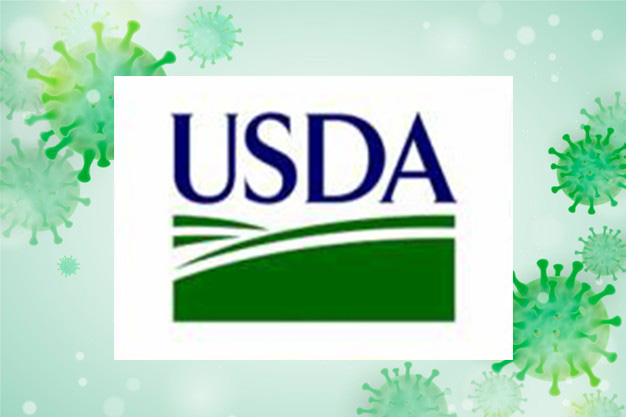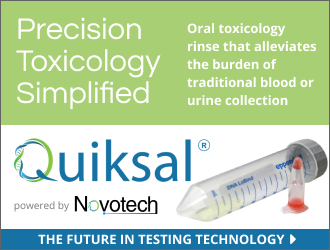
USDA Deploys 487 Disaster, Public Health Specialists to Assist with Federal Response
WASHINGTON, Mar. 3, 2021 — In January 2021, President Biden released the National Strategy for the COVID-19 Response and Pandemic Preparedness. The plan is driven by science, data, and public health to improve the effectiveness of our nation’s fight against COVID-19 and to restore trust, accountability and a sense of common purpose in our response to the pandemic.
The National Strategy provides a roadmap to guide America out of the worst public health crisis in a century. It is organized around seven goals:
- Restore trust with the American people.
- Mount a safe, effective, and comprehensive vaccination campaign.
- Mitigate spread through expanding masking, testing, data, treatments, health care workforce, and clear public health standards.
- Immediately expand emergency relief and exercise the Defense Production Act.
- Safely reopen schools, businesses, and travel while protecting workers.
- Protect those most at risk and advance equity, including across racial, ethnic and rural/urban lines.
- Restore U.S. leadership globally and build better preparedness for future threats.
The plan calls on all parts of the federal government to contribute its resources—facilities, personnel, and expertise—to contain the pandemic. Chief among the efforts is a whole-of-government response to stand up new federally supported community vaccination centers across the country.
The U.S. Department of Agriculture (USDA) is responding to the President’s call to action. In addition to personnel, USDA is offering its facilities, cold chain infrastructure, public health experts, disaster response specialists, and footprint in rural areas and Tribal communities across the country. Here are the some of the ways USDA is working alongside our federal partners to contain the pandemic and get our economy back on track.
Programmatic Announcements
- Mar. 2: To date, for the 2020-2021 School Year, USDA has approved $10 billion to provide Pandemic EBT benefits to 11.4 million children in 22 states and territories. Most recently, USDA’s Food and Nutrition Service has approved plans for school aged children in Arizona, Connecticut, Florida, Kentucky, Virginia, and Washington, and for children under 6 in Arizona and Indiana.
- Feb. 25: Food Lion plans to extend SNAP online purchasing to eight additional states—Delaware, Georgia, Kentucky, Maryland, South Carolina, Tennessee, West Virginia, and Virginia—beginning Feb. 25. In response to the COVID-19 pandemic, USDA’s Food and Nutrition Service has been working to expand access to online purchasing for SNAP participants. The full list of states and retailers participating in the SNAP Online Purchasing Pilot is available on the FNS website.
- Feb. 24: USDA’s Food and Nutrition Service has approved five states for SNAP emergency allotments totaling $430,994,867 for the month of March 2021. State and territorial agencies submit their emergency allotment extension requests to FNS throughout the month for acknowledgement and approval, as long as they continue to meet their emergency declarations due to the pandemic.
- Feb. 23: USDA’s Food and Nutrition Service released $400 million in additional funding to states to support The Emergency Food Assistance Program (TEFAP), including $73.3 million in administrative funds and $326.7 million to purchase food through the Agricultural Marketing Service.
- Feb. 23: Education Department Amplifies Expansion of SNAP Benefits to Help Students Pursuing Postsecondary Education During Pandemic. In accordance with President Biden’s January 22nd Executive Order on extending economic relief during the pandemic, USDA worked with the Department of Education to increase awareness of newly expanded SNAP eligibility guidelines for students.
- Feb. 18: COVID-19 Update: USDA, FDA Underscore Current Epidemiologic and Scientific Information Indicating No Transmission of COVID-19 Through Food or Food Packaging.
- Feb. 17: USDA’s Food and Nutrition Service approved 47 states and territories for emergency allotments in SNAP, totaling $2,033,734,872 for the month of February 2021. FNS also approved one state for emergency allotments totaling $55,595,754 for the month of March 2021.
- Feb. 17: USDA COVID-19 Workplace Safety Plan
- Feb. 16: Biden Administration Announces Another Foreclosure Moratorium and Mortgage Forbearance Deadline Extension That Will Bring Relief to Rural Residents: USDA extended the eviction and foreclosure moratoriums on USDA Single Family Housing Direct and Guaranteed loans through June 30, 2021 due to an almost unprecedented housing affordability crisis triggered by the COVID-19 pandemic.
- Feb. 1: Biden Administration Halts Residential Evictions in USDA Multifamily Housing Communities in Accordance with CDC Guidance: USDA extended the eviction and foreclosure moratorium to affected multifamily housing residents through March 31, 2021, providing relief to the tens-of-thousands of Americans who rely on USDA-supported multifamily housing communities.
- Jan. 27: USDA Temporarily Suspends Debt Collections, Foreclosures and Other Activities on Farm Loans for Several Thousand Distressed Borrowers Due to Coronavirus: USDA temporarily suspended past-due debt collections, foreclosures, non-judicial foreclosures, debt offsets or wage garnishments, and referring foreclosures to the Department of Justice and U.S. Attorney’s Office.
- Jan. 22: Biden Administration Expands P-EBT to Benefit Millions of Low-Income and Food Insecure Children During Pandemic: USDA is increasing the Pandemic-EBT benefit by approximately 15%, providing more money for low-income families and millions of children missing meals due to school closures.
Personnel Deployments
487 Personnel Deployments to Date (Mar. 3, 2021)
- The USDA Animal and Plant Health Inspection Service (APHIS) has deployed 200 employees, including 144 employees to Nevada and Oklahoma to administer vaccinations at a variety of rapid points of distribution including mobile teams and pop-up clinics; 8 employees to Dallas; 2 employees to Ohio; 14 employees to Oregon; 11 employees to Maryland; 7 employees to Washington State; 6 employees to Chicago; and 8 employees to support FEMA efforts across the country.
- The USDA Agricultural Research Service (ARS), the Agricultural Marketing Service, and the Food Safety Inspection Service (FSIS) have dispatched 28 veterinarians to assist with vaccination efforts in Nevada, Maryland, and Oklahoma.
- The USDA Forest Service has deployed 255 Incident Management Team personnel and they are currently assigned to the National COVID Vaccine Campaign staffing vaccination centers, providing logistical support, planning at regional/state levels with FEMA and states, and more.
- Four (4) U.S. Public Health Service Commissioned Corps Officers detailed to the USDA Food Safety and Inspection Service (FSIS) are assisting with logistical support for the vaccination campaign.


Bulloch Public Safety
06/23/2025 Booking Report for Bulloch County

Bulloch Public Safety
06/30/2025 Booking Report for Bulloch County

Bulloch Public Safety
7/14/2025 Booking Report for Bulloch County

Bulloch Public Safety
7/11/2025 Booking Report for Bulloch County

Bulloch Public Safety
7/09/2025 Booking Report for Bulloch County








